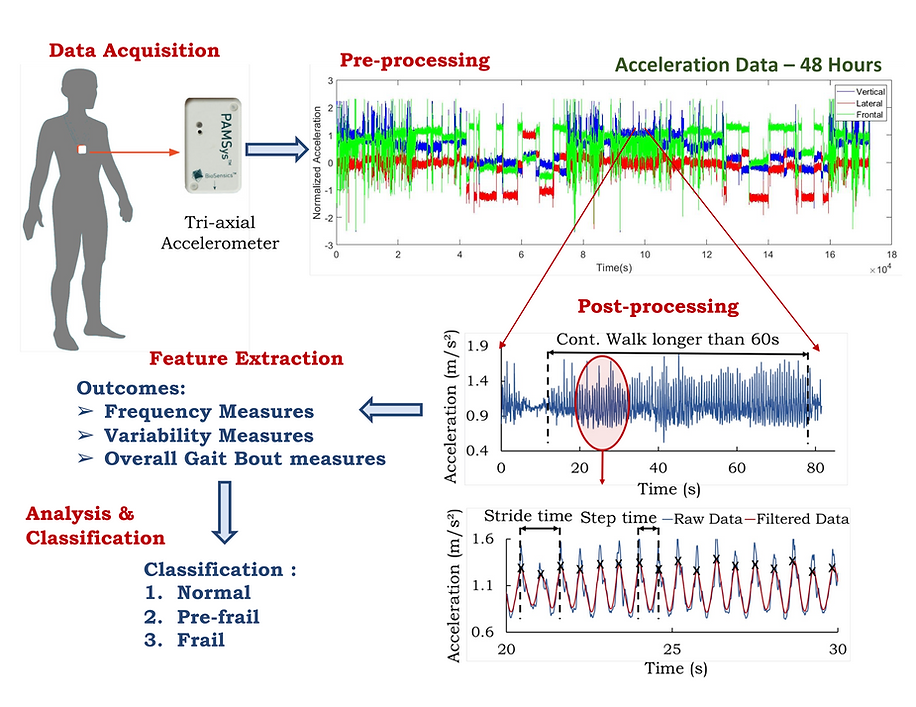Wearable devices and frailty assessment
Summary: Among the population who are 60 years or older, frailty is a highly recognized syndrome that is associated with decline in function and reserve across multiple physiologic systems. Frailty is characterized by a high vulnerability to adverse health outcomes such as disability, falls, hospitalization, institutionalization, and mortality. Reduction or impairment of physical function is a prime indicator of frailty, and frailty is one of the major reasons for falls in old age. Daily physical activity (DPA) data has been recently used to assess physical function, especially with the help of wearable sensor technology. Using wearable devices, it is possible to continuously measure DPA in the least intrusive manner and for longer durations of time in the participants’ natural environment. Despite technological advances, clinical adoption of wearable devices is still limited, due to lack of a clear connection between sensor-based data and frailty. Among several DPA, motion analysis of the trunk during walking is known to provide insights regarding neuromuscular deficits associated with frailty and aging. Using a combination of unsupervised DPA performance measurement and machine learning techniques, we will detect deficits in motor functions that are associated with frailty. For the older adults requiring continuous health monitoring, sensor-based wearables and remote monitoring will help eliminate the hassle of periodic commute to diagnostic centers, reduce the amount of recurring admissions to the hospital, and facilitate more efficient clinical visits with objective results.

Instrumented mouthguards for head kinematics and brain injury risk assessment
This preliminary study investigated whether direct measurement of head rotation improves prediction of mild traumatic brain injury (mTBI). Although many studies have implicated rotation as a primary cause of mTBI, regulatory safety standards use 3 degree-of-freedom (3DOF) translation-only kinematic criteria to predict injury. Direct 6DOF measurements of human head rotation (3DOF) and translation (3DOF) have not been previously available to examine whether additional DOFs improve injury prediction. We measured head impacts in American football, boxing, and mixed martial arts using 6DOF instrumented mouthguards, and predicted clinician-diagnosed injury using 12 existing kinematic criteria and 6 existing brain finite element (FE) criteria. Among 513 measured impacts were the first two 6DOF measurements of clinically diagnosed mTBI. For this dataset, 6DOF criteria were the most predictive of injury, more than 3DOF translation-only and 3DOF rotation-only criteria. Peak principal strain in the corpus callosum, a 6DOF FE criteria, was the strongest predictor, followed by two criteria that included rotation measurements, peak rotational acceleration magnitude and Head Impact Power (HIP). These results suggest head rotation measurements may improve injury prediction. However, more 6DOF data is needed to confirm this evaluation of existing injury criteria, and to develop new criteria that considers directional sensitivity to injury.

